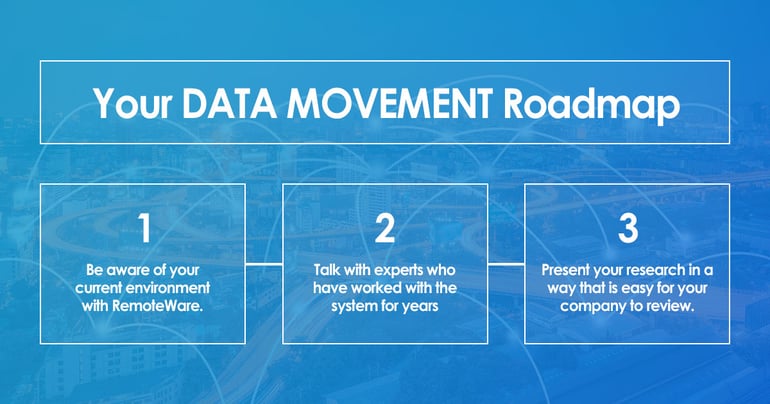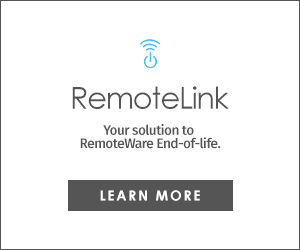
If your company currently relies on RemoteWare, then you will have recently found yourself in the position of answering the question, "What next?"

While we will to share our professional opinion, we also want to provide you with an effective guide to determining what data movement system is right for you. After years in the business, our recommendation is to consider RemoteLink as your complete, end-to-end RemoteWare replacement solution.
Your Data Movement System Switch Playbook
1. Be aware of your current environment with RemoteWare.
Before choosing a new data movement system, you will have to reevaluate your current environment, including what's worked and what could be improved. This will help define the parameters for your new software solution. In addition to looking at the present, take into consideration the future of the company and any plans for growth. While some systems may fit your needs right now, we recommend finding a solution that can scale with your organization.
Consider answering the following questions:
- What is the size of my current environment?
- How many people are actively working within the software?
- What are my company's plans for growth?
- What are we paying for RemoteWare (or our current system)?
2. Talk with the experts.
When looking into new data movement software, talk to people who have been working with the system for years. Whether you speak with current customers, or get in touch with an IT consulting firm for more in-depth knowledge of the product, you're going to want to prepare questions for the conversation.
Since you will need to present your software recommendation to upper management, be sure you fully understand:
- The transition process in terms of installation time and difficulty.
- The learning curve for employees.
- How the new software can be sized for your environment.
- The upfront costs.
- The long-term costs or savings.
- How additional support will be provided during and/or after install.
- The differences and similarities between your current system and the new one.
3. After doing your research, present your findings in a way that is easy for your company to review.
Remember that everyone involved in the decision process may not have the same level of expertise or intuitiveness in IT. Using comparative data, charts, and graphs may help others better understand your recommendation, and lead to a more fluid decision making process.
Although SAP will be continuing support until June 30th 2018, transitioning to a new data movement system is a big business decision and will inevitably require time and fund reallocation to complete.

